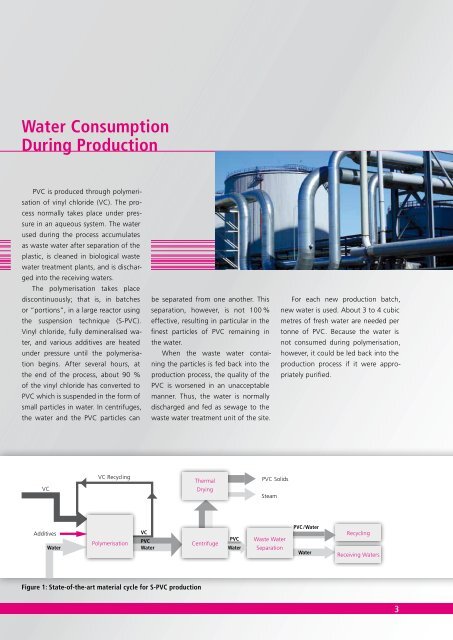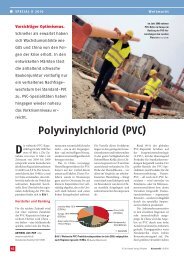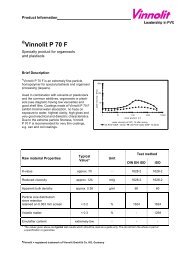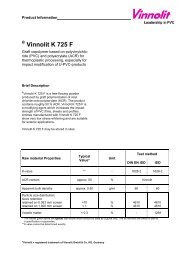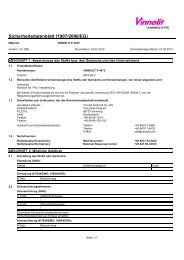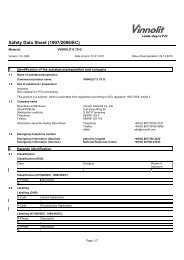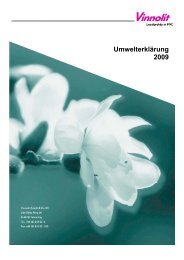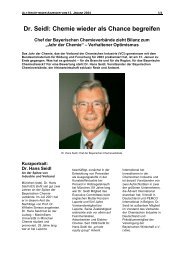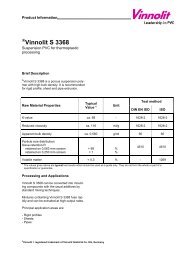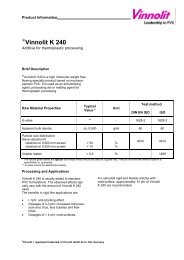Vinnolit - wise-rtd.info
Vinnolit - wise-rtd.info
Vinnolit - wise-rtd.info
Create successful ePaper yourself
Turn your PDF publications into a flip-book with our unique Google optimized e-Paper software.
Water Consumption<br />
During Production<br />
PVC is produced through polymeri-<br />
sation of vinyl chloride (VC). The pro-<br />
cess normally takes place under pres-<br />
sure in an aqueous system. The water<br />
used during the process accumulates<br />
as waste water after separation of the<br />
plastic, is cleaned in biological waste<br />
water treatment plants, and is dischar-<br />
ged into the receiving waters.<br />
The polymerisation takes place<br />
discontinuously; that is, in batches<br />
or “portions”, in a large reactor using<br />
the suspension technique (S-PVC).<br />
Vinyl chloride, fully demineralised wa-<br />
ter, and various additives are heated<br />
under pressure until the polymerisa-<br />
tion begins. After several hours, at<br />
the end of the process, about 90 %<br />
of the vinyl chloride has converted to<br />
PVC which is suspended in the form of<br />
small particles in water. In centrifuges,<br />
the water and the PVC particles can<br />
VC<br />
VC Recycling<br />
be separated from one another. This<br />
separation, however, is not 100 %<br />
effective, resulting in particular in the<br />
finest particles of PVC remaining in<br />
the water.<br />
When the waste water containing<br />
the particles is fed back into the<br />
production process, the quality of the<br />
PVC is worsened in an unacceptable<br />
manner. Thus, the water is normally<br />
discharged and fed as sewage to the<br />
waste water treatment unit of the site.<br />
Additives<br />
VC<br />
Water<br />
Polymerisation<br />
PVC<br />
Water<br />
Centrifuge<br />
Figure 1: State-of-the-art material cycle for S-PVC production<br />
Thermal<br />
Drying<br />
PVC<br />
Water<br />
PVC Solids<br />
Steam<br />
Waste Water<br />
Separation<br />
For each new production batch,<br />
new water is used. About 3 to 4 cubic<br />
metres of fresh water are needed per<br />
tonne of PVC. Because the water is<br />
not consumed during polymerisation,<br />
however, it could be led back into the<br />
production process if it were appropriately<br />
purified.<br />
PVC / Water<br />
Water<br />
Recycling<br />
Receiving Waters<br />
3


